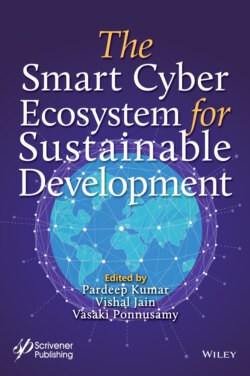Читать книгу The Smart Cyber Ecosystem for Sustainable Development - Группа авторов - Страница 66
2.7.2.5 Handover
ОглавлениеTransparent handover with minimum overhead is still an open issue in WLANs. Though the 802.11r standard developed protocols that help implementing seamless handover between WLAN cells, still APs and users need to be highly engaged in the handover process. This impacts the performance of APs, especially in dense deployments; wherein handover rate is expected to be high. With the advancement in AI and ML; coupled with the evolving SDN technology, researchers are trying to develop methods that allow low cost and successful transparent mobility among WLAN cells.
An example effort is published in [67], where the authors developed an SDN-based solution for controlling and managing handover in WLANs. The proposed solution allows the devices to seamlessly move across cells without losing the QoS level.
The researchers in [68] developed a framework to optimize the handover process and balance the network throughput and handover rate. Unsupervised ML algorithm is used to classify users according to their mobility patterns. Then, deep RL is used to optimize the handover process in each cluster. The received signal power by the user from APs is used as the state vector. The reward is considered to be the weighted sum between the handover rate and the throughput.
In [67], the authors developed and tested an SDN-based solution for providing seamless handover in WLANs based on virtual APs. The solution maintains QoS requirements of real time applications in terms of packet loss and delay.
